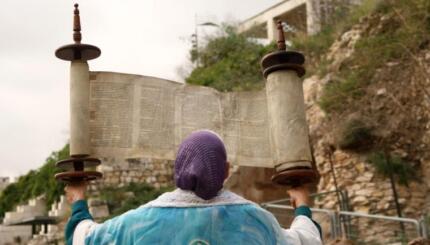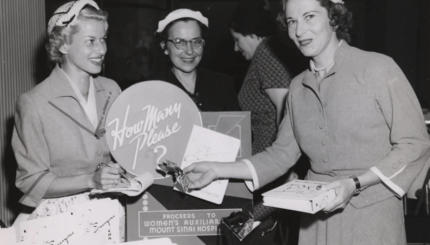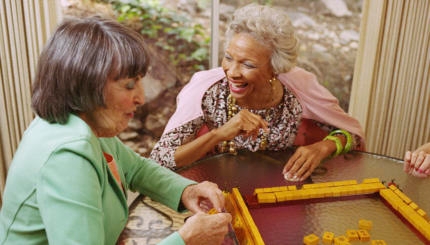For over a century American Jewish women have banded together to form sisterhoods. Over the years, these sisterhoods have labored in several different fields, serving as a vehicle for the expansion of the American synagogue into new areas of activity. American Jewish leaders, inspired by the notion that women were uniquely suited to saving Judaism, the synagogue, or a particular movement from internal or external crises, have looked to Jewish women for salvation.
In response, sisterhoods have served as philanthropic organizations, pursuing a community-oriented vision of uplift of the poor; they have provided innumerable services to their own congregations, raised much-needed funds, maintained religious schools, fostered congregational unity, and sponsored educational programs for adult women and men. They have engaged in national endeavors, offered succor to soldiers during time of war, taken sides in national political debates, and promoted better relations among Americans of all faiths and ethnicities. Not least, sisterhoods offered Jewish women a place to gather as women and as Jews, to socialize with each other, and to strengthen the bonds that connect them. Even the word “sisterhood” indicates a certain type of relationship that members have always striven for among themselves: a closeness, a sisterliness, a familiar, familial feeling.
Synagogue and Temple Sisterhoods
Though American Jewish leaders decried the presence of apathy among American Jews as early as the 1870s, in the period between the two world wars this crisis intensified. With the ebb and eventual cessation of Jewish immigration in the 1920s, American Jews could no longer rely on waves of religious immigrants to sustain Jewish life and keep it vibrant. The new task was to “Judaize” the Americans: to prevent Jews’ complete assimilation into American culture and to preserve a Jewish identity that could exist in harmony with American ideals…
Synagogue leaders turned to women for help. The new sisterhoods that rabbis founded in the 1910s and beyond, in all parts of the county and across the ideological spectrum of American Judaism, were primarily devoted to three goals: service to the synagogue, to Judaism, and to their respective denominations. The roster of activities the sisterhoods established in this period have continued to this day, though the perception of crisis has waxed and waned.
Service to the Synagogue
Sisterhoods were dedicated primarily to serving their congregations. By making the synagogues or temple a more welcoming, comfortable, friendly, and even home-like place, they hoped to encouraged synagogue attendance and membership. In conjunction with congregational brotherhoods, which were founded in the 1920s, 1930s and 1940s, they promoted “sociability” among members, making special efforts to welcome visitors and new members, providing flowers and other decorations for synagogue services and holidays, offering refreshments for social hours after services, and sponsoring events like congregational Seders, Hanukkah parties, and Purim carnivals.
Sisterhood members also often undertook the responsibility of maintaining or at least enlivening religious education for the children of the synagogue. Whether they served as teachers, administrators or fundraisers, or simply provided special gifts at holidays and graduations, sisterhood women—as the “mothers” of their congregations—endeavored to improve the education of the congregation’s children and to intensify their connection to Judaism.
Sisterhoods as organizations also helped to strengthen the synagogue by serving as vehicles for attracting non-affiliated or inactive women to synagogue activities… Sisterhoods provided women who might not be interested in attending religious services with other ways of expressing their Jewish identities—though with the underlying hope was that these women would eventually seek out the synagogue’s religious activities as well.
In the financial realm, sisterhoods proved indispensable to American synagogues and temples. Though women had been contributing financially to their synagogues since colonial times, the sisterhoods of the interwar and postwar periods served as particularly useful venues for raising funds needed to support new congregational buildings, special congregational projects, and even to cover shortfalls in annual budgets. Fundraising became an especially important element of sisterhood work during the Depression years and has continued to this day as an essential element of most sisterhoods’ activities.
Service to Judaism and Their Movements
Beyond supporting their individual synagogues, sisterhoods have always endeavored to strengthen Judaism as a whole. In the interwar period, sisterhoods struggled to counteract the apathy and “hedonism” of the time by presenting Judaism as a beautiful, meaningful, and moral way of life that could exist in complete harmony with modern American values. To this end, they attempted to create interesting and relevant educational programs and reading materials for adults—especially sisterhood members—and for children.
In these efforts, the sisterhoods were lead by their three national coordinating agencies: the National Federation of Temple Sisterhoods (NFTS), founded in 1913 (now Women of Reform Judaism); the National Women’s League of the United Synagogue, founded in 1918 (now Women’s League for Conservative Judaism); and the Women’s Branch of the Orthodox Union of Jewish Congregations of America, founded in 1923… All three organizations have emphasized the special role of the mother in preserving and transmitting Judaism: mothers can foster warm, Jewish atmospheres in their homes, can encourage their families—husbands and children alike—to attend synagogue services and become involved in synagogue activities, and can teach their children about Jewish life and encourage them to attend religious school.
Local sisterhoods and their national organizations have also worked to strengthen their respective movements. Aside from promoting a movement-specific agenda in their publications and educational programs, the national organizations also raised funds for the institutions connected to their movements. Women’s League and the NFTS have raised millions of dollars for the support of their respective rabbinical seminaries, the Jewish Theological Seminary of America and Hebrew Union College…
Service to American and World Jewry
Synagogue and temple sisterhoods have also endeavored to meet many of the other challenges confronting American and world Jewry over the years. As early as the 1920s, sisterhoods sent financial support to the Jews of Ethiopia. In the 1970s and 80s they supported efforts to aid Jews in the Soviet Union and assisted many of the Russian Jews who came to the United States…
Sisterhoods have also consistently endeavored to participate in and contribute to American society. During time of war, sisterhoods engaged in a range of activities to support the American war effort. In both world wars, local sisterhoods sewed bandages and assembled packages for the Red Cross, provided entertainment for soldiers on leave, turned their offices and synagogue vestry rooms into makeshift hospitals, sold War Bonds, and trained for national defense and or wartime jobs…
The Challenge of the Women’s Movement
The women’s movement of the 1970s and 1980s brought a new challenge to synagogue and temple sisterhoods. Whether sisterhoods are or have historically been feminist is a question still subject to considerable debate. With the feminist challenges to Judaism that appeared in the 1970s and 1980s, Women’s League and the NFTS promoted an expanded role for women in Jewish religious life, supporting women’s desire to assume larger roles in synagogue worship and, ultimately to become rabbis.
Women’s Branch, though it would hardly label itself feminist, has always promoted better religious education for girls and women. It has been working for decades to ameliorate the conditions of the agunah, the wife whose husband has disappeared or who refuses to divorce her. Women’s Branch sisterhoods have also struggled with the issues of all-women tefillah (prayer) groups and the form—if any—a girls’ bat mitzvah should take.
Whatever their ideological position—feminist or non-feminist, Conservative, Reform, Orthodox or even Reconstructionist—synagogue and temple sisterhoods have offered countless American Jewish women a public and active way of expressing their identities as Jews and as women.
Reprinted from the American Jewish Historical Society’s American Jewish Desk Reference: The Ultimate One Volume Reference to the Jewish Experience in America, published by Random House.
bat mitzvah
Pronounced: baht MITZ-vuh, also bahs MITZ-vuh and baht meetz-VAH, Origin: Hebrew, Jewish rite of passage for a girl, observed at age 12 or 13.
Hanukkah
Pronounced: KHAH-nuh-kah, also ha-new-KAH, an eight-day festival commemorating the Maccabees’ victory over the Greeks and subsequent rededication of the temple. Falls in the Hebrew month of Kislev, which usually corresponds with December.
mitzvah
Pronounced: MITZ-vuh or meetz-VAH, Origin: Hebrew, commandment, also used to mean good deed.
Purim
Pronounced: PUR-im, the Feast of Lots, Origin: Hebrew, a joyous holiday that recounts the saving of the Jews from a threatened massacre during the Persian period.


